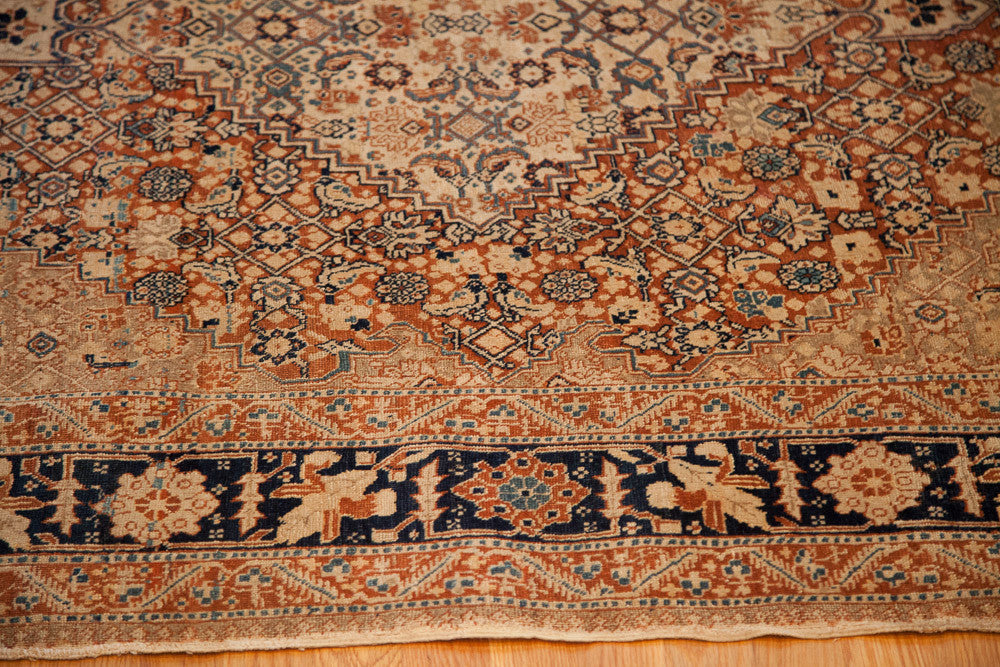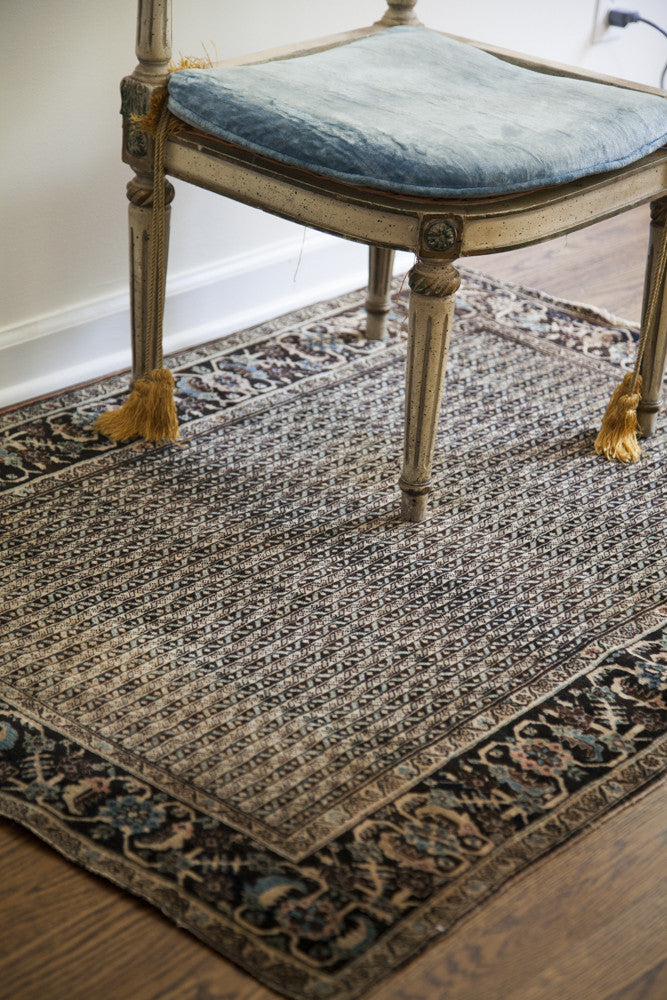Reconnecting with a few antique rugs
Carpets never cease to amaze me. Isolating a single square foot, each section of a rug conveys a completely different palette and pattern. As a rug enthusiast I find myself relating to single areas or patterns as much as I do the overall aesthetic of an entire rug. Here are a few rugs from our antiques section I thought I would shed a bit more light on.
Antique Persian Tabriz Rug: This older Tabriz features a stunning ivory center medallion, rust field and beige/sand corner spandrels. My eye is always particularly drawn to the beautiful, yet sparse, shades of deep jewel teal and blue. The border is also quite admirable - a very softly seasoned tone-on-tone medallion and field is confidently wrapped with a palmetto + serrated leaf motif woven with handsome and harnessed strength in design and contrast. Harmonious and powerful!
Antique Persian Farahan Sarouk Rug : Exceptionally detailed carpet with excellent weave and wool. Such a fantastic design in this little antique Sarouk Farahan. The allover vertical meandering leaf field design is so simple in so many ways, yet the dynamic really lends to the feeling of movement in this rug. True to its way, this certainly does feel like the running channels of water design as it is known!
Antique Persian Bijar : A rare and early wool weft antique Persian Halvaie Bijar. Fantastic execution of design with phenomenal range of colors with deep saturation in all shades!
Thanks for checking in, stay tuned for new arrivals & enjoy your next rug from our great selection of antique and vintage rugs
Melissa + Dave
Old New House






